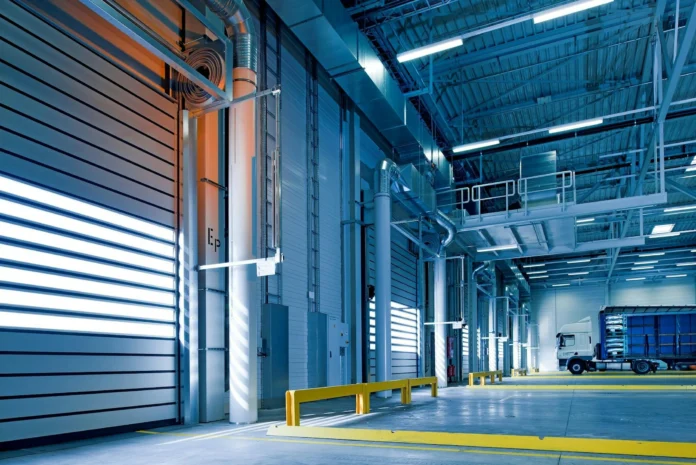The self-storage industry has seen a significant evolution, shifting from basic metal sheds with padlocks to high-tech facilities featuring smart technology. Today’s consumers expect more than just storage—they demand accessibility, convenience, and top-tier security.
According to GlobeNewswire, the North American self-storage market was valued at approximately USD 28.50 billion in 2023. It is projected to grow at a 6% CAGR in the coming years. Urban expansion, rising disposable income, shifting consumer lifestyles, and technological advancements are key factors driving this growth.
This article explores the essential security and technology needs for today’s self-storage operations. We’ll provide insights into how these elements protect stored goods and enhance the overall customer experience and operational efficiency.
Understanding Market Demand & Security Expectations
Success in the self-storage industry hinges on a clear understanding of both market demand and the security expectations of customers. A comprehensive self-storage demand study is crucial for assessing location feasibility and mitigating risks. This study should analyze population growth, rental occupancy rates, and competitor offerings to gauge market saturation.
Self Storage 101 highlights that the costs associated with building a facility are substantial, varying greatly by type, location, and design. Therefore, accurate demand projections are essential to avoid costly missteps and ensure an optimal unit mix.
Beyond demand, identifying customer security expectations is paramount. Modern customers prioritize safety and convenience. Analyzing preferred tech features allows businesses to tailor their offerings. By aligning security measures with customer needs and market demand, self-storage operators can build a strong foundation for sustainable growth and profitability.
Essential Physical Security Components
Physical security components are essential in safeguarding a self-storage facility, especially considering rising security concerns. As KCRA 3 News reported, a surge of burglaries in Ceres underscores the vulnerability of such facilities. The Ceres Police Department has urged victims to come forward and encouraged unit holders to inspect their storage units for security.
The backbone of a modern facility transcends basic fencing, demanding layered security for customer peace of mind.
Perimeter security begins with high-grade fencing and access-controlled gates complemented by strategic landscaping and motion-sensor LED lighting. Individual unit security involves commercial-grade doors with tamper-resistant locks, with smart locks offering digital audit trails.
Building design now incorporates security, featuring limited entry points, reinforced walls, and strategically placed offices for maximum visibility. Some facilities can also enhance security with bulletproof glass and concrete barriers, deterring vehicle ram raids. These physical components collectively create a formidable defense against potential threats, ensuring the safety of stored belongings.
Surveillance and Monitoring Technology
Surveillance technology in modern self-storage has evolved into a sophisticated network, transcending basic CCTV. High-definition IP cameras with night vision and video analytics provide comprehensive coverage, detecting unusual patterns and breaches. Cloud-based systems enable remote monitoring and long-term storage, which are vital for security and liability. License plate recognition further enhances tracking.
Increasingly, AI-powered surveillance is being implemented, distinguishing normal behavior from suspicious activity and triggering real-time alerts. Inside Self-Storage notes that AI-based predictive analytics using sensor data enhances equipment uptime and reduces irrelevant alerts. Moreover, AI aids investors by analyzing data sets to identify trends, predict market growth, and evaluate acquisitions, pinpointing high-demand areas and forecasting ROI.
Environmental monitoring is also crucial, with sensors tracking temperature, humidity, water leaks, fire risks, and air quality. This protects infrastructure and belongings while providing data for operational improvements. These advanced technologies collectively bolster security and operational efficiency.
Access Control Systems
Modern access control systems prioritize both customer convenience and robust security. Keypad entry systems with individual PINs and mobile app integration have replaced traditional keys, creating digital access records. Touchless access via BLE and NFC technologies, popular for hygiene and security, is now standard.
In multi-story facilities, elevator control systems restrict floor access, enhancing security. Premium facilities may offer biometric options like fingerprint or facial recognition. However, as TechTarget highlights, significant concerns exist regarding data breaches and trust in biometric technologies.
While over 50% are comfortable using biometrics in public spaces, over 40% express neutrality or discomfort. This calls for careful implementation with a strong focus on data privacy and transparency.
Management Software and Automation
Modern self-storage operations cannot function effectively without management software and automation. These essential systems provide crucial features, including:
- Payment tracking
- Inventory monitoring
- Report generation
- Leasing and payment portals for customers
- Financial, customer, and facility data management
As Forbes notes, specialized software is crucial; a robust platform provides a significant competitive edge. Cloud-based systems enable remote monitoring while integrated customer portals and mobile apps empower tenants to manage accounts and access permissions independently.
Automation enhances efficiency, with climate control adjusting based on occupancy, smart lighting reducing energy consumption, and maintenance alerts flagging potential issues. Some facilities utilize robotic security patrols with AI for overnight surveillance, minimizing staffing costs. These technologies streamline operations, improve customer experience, and bolster security.
Frequently Asked Questions
How does technology enhance the customer experience in self-storage?
Technology enhances the self-storage customer experience by enabling 24/7 access control, mobile app management, and smart locks for secure, keyless entry. Online booking and digital payments simplify transactions. Automated billing ensures hassle-free renewals. Real-time security alerts, climate monitoring, and AI-driven customer support improve safety, accessibility, and overall satisfaction.
How do I balance security needs with budget constraints when opening a new facility?
Start by prioritizing investments based on your demand study findings and local crime statistics. Essential elements include perimeter security (fencing and gates), basic access control, and surveillance coverage of entry points and main corridors. Implement infrastructure in phases, incorporating elements that support future expansion, such as installing conduits for additional cameras or pre-wiring for access control systems.
How are privacy regulations affecting self-storage security technology?
Privacy regulations are increasingly impacting how self-storage operators collect, store, and utilize customer data and surveillance footage. Compliance requires implementing data minimization practices, establishing clear retention policies for video footage, and providing transparent privacy notices to customers. Biometric security features face particular scrutiny, with some jurisdictions requiring explicit consent before collecting fingerprints or facial recognition data.
The modern self-storage business exists at the intersection of real estate, security, and technology. Success in this competitive industry requires not just providing secure space but creating a seamless, technology-enhanced customer experience.
As technology continues to evolve, successful self-storage operators will need to balance security investments with customer convenience. Those who master this balance—starting with thorough market research and continuing through thoughtful technology implementation—will be well-positioned to thrive in this growing industry.






